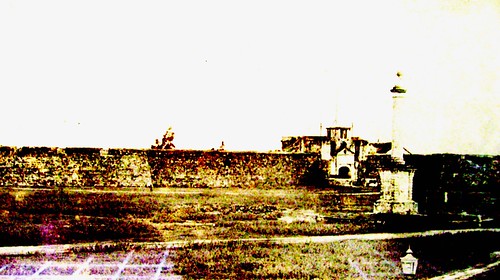
The fort and Plaza Independencia Circa 1904
Fort San Pedro is a miniature version of Intramuros. Well, it was never built to protect a settlement but to provide safe haven for the men who dared invade the often hostile native inhabitants. I can imagine the Kastilas running for cover here! The triangular shaped fortification is quite odd especially for a first time visitor, but if your being constantly under attack, defending 3 sides is a lot easier than looking after 4 [Legazpi only kept a small army]. I think it was really devised to provide a fast cover and transitory quarters but within the fort there is a convent, several wells and I believe a school, but looking at how small the fort is, it's hard to picture how they all can fit here. The Americans made the fort a barracks, and then it became a school until it was turned over to the city administrators.
What makes this fort significant is that not only its status as the oldest known fortification in the islands but that it was built under the supervision of the adelantado himself, Miguel Lopez Legazpi, who honored his lead ship and named the fortification after it.
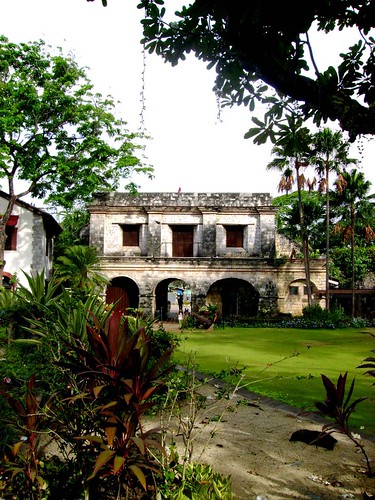
Main edifice connected to the gate
It has several canons sitting on strategic location around the wall. An excavation was said to have been made, proving that there was a prehispanic population where the walls stands, the same is said to be true in Manila where Legazpi had built his city on top of a native Bornean kingdom, that is why excavation is always being sought under Intramuros.
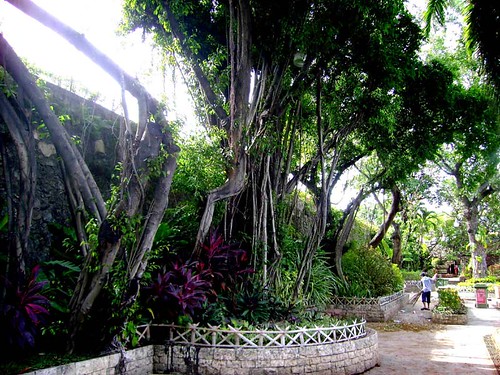
Flora and fauna inside the fort
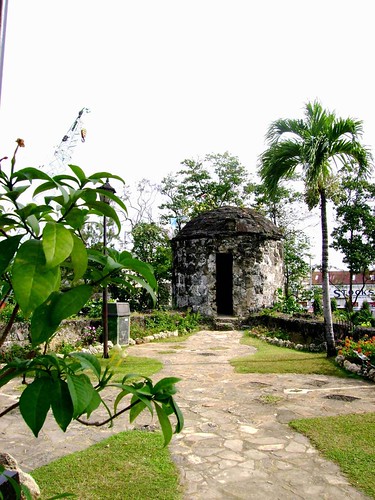
One of the three main security post on top of the forts thick wa ls
The fort is well kept, but I've heard that it was not always the case. Plants and trees are abundant, there were lovely flowers, bathing pigeons and a resident sleepy cat. Outside, on the left side of the entrance a monument dedicated to Legazpi, at the back, which is obscured by many things, fronting a hoops court a monument for the scribe Pigaffeta.
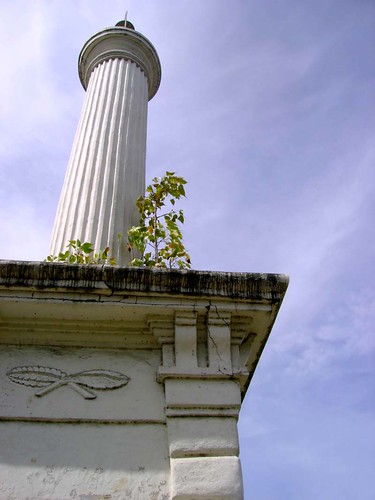
The white stone monument dedicated to Legazpi
If your wondering what that white tower [painted so white you can't make out what the marker says!] in Plaza Independencia is, that's the monument built honoring Legazpi, it declares "Primer Gobernador de Estas Islas y Fundador de Esta Ciudad", at the other side of the tower is written, "Ano de 1855 Reinando Isabel II y Mandando La Pro. El Sr. Rafael Cervero Y Valdez".
This plaza is also the original site of the capitol before it got moved to Osmenia/Escario. The plaza now serves as sleeping grounds for the homeless people, there is massive road construction now in the area. Every Sunday there's a makeshift barberia there. A monobloc, a hand mirror and the mighty barbero, but I didn't bother to take picture for fears that the barber could stab me open with what look like razor sharp labaja!
Overall, the fort is a great place to visit - the city government [to my surprise] did a descent job on this heritage site, but I feel more has to be done, like why isn't there any effort to make this heritage sites tourist friendly? It's a must in your place "to visit" list!
Another curious structure in the area, right across the plaza fronting the sea is the Malacanang sa Sugbo, which was vandalized by this current presidents vanity, who placed her year [2004] of renovation in front of the building, when I went to the building I understand what's the purpose why they placed those big bold numbers 2004 there - that was stupid. This edifice is the Cebu's Aduana built in the early 1900's.



No comments:
Post a Comment